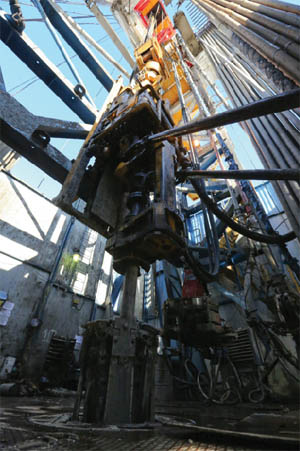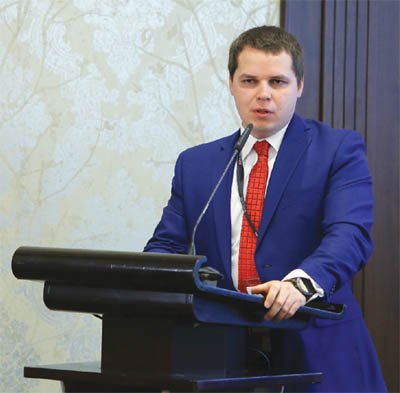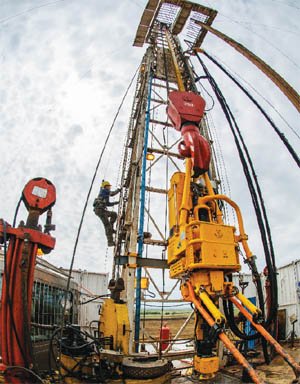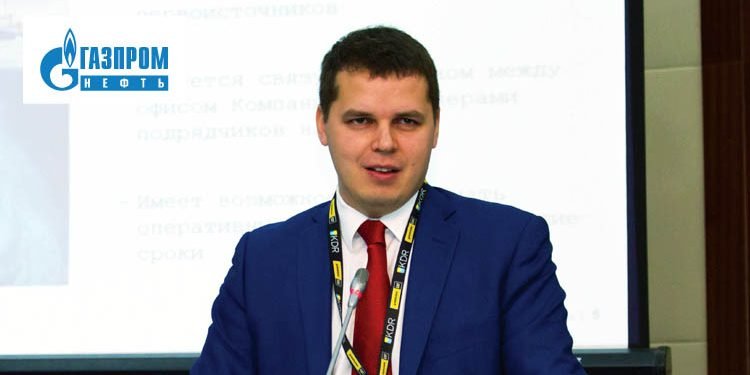ROGTEC Interview: Alexey Cherepanov, Gazprom Neft. Partnering for the Future of the Drilling Market
This year, during the RDCR forum, you talked about strategies aimed at improving the company’s drilling performance. What strategies have you implemented? What benefits and improvements did you achieve by implementing these strategies?
Increasing the efficiency of the entire well construction life cycle is crucial to the further development of the whole oil and gas industry. This is due to a number of factors, the most significant of which is the deterioration in the quality of the resource base. To extract oil, we are forced to use new technologies, to search for drilling and completion solutions which will enable us to resolve problems in such complex conditions. Last year, the proportion of high-tech wells, within the Gazprom Neft group of companies, accounted for more than 50% of the total number of wells delivered.
Another significant factor is that the new fields are becoming smaller, and they are located, as a rule, far from the existing infrastructure and are in more severe climatic conditions. In such circumstances, for a field to be profitably developed, we need to achieve a maximizum level of integrated efficiency, by optimizing the entire project in an integrated way, and finding a balance between the technological capacity and economic performance.
A good illustration of such a balance is the example of a case involving the elongation of a horizontal well which increased flow rates of the well and thereby compensated for the investment costs of the technology. From a technical point of view, well «N» could be drilled to 3 – 4 thousand metres, but the threshold of profitability is limited to 1.5-2 thousand meters. With any further extension, the drilling costs, given current efficiency indicators, would exceed the
profit achieved from the additional oil production.

Therefore, one of the key strategic tasks for Gazprom Neft is to improve the operational efficiency, including that of the partners’ – oilfield services companies.
One of the typical challenges involved in resolving this issue is the fact that Gazprom Neft does not have its own drilling companies (with the exception of joint ventures with NGK Slavneft). Thus any solutions aimed at improving effectiveness are implemented by our subcontractors at different speeds. Our strategy is aimed at working with the market, with all its participants in Russia and abroad.
In our report, we showed the experience of our North American colleagues who have made a huge leap in the field of drilling efficiency. In the space of just a few years, they have been able to increase the efficiency of well construction (reduced the well construction cycle) by approximately 60% and reduce well cost by 65%.
Of course, Russia has its own requirements and our market is quite different from the US market, and this is something that needs to be taken into account. However, the potential which we can see is really food for thought.
Improving the culture of drilling operations, as well as increasing drilling performance is something that must be dealt with on a daily basis. What do you think the company has learned this year? What improvements have been achieved?
The culture of production is an area of development which most companies in our country need to look at. We have been paying serious attention to it and in 2014 we introduced the «Technical limit» project to this end. It is aimed primarily at improving production safety, and secondly, it allows a significance increase in efficiency while using the same technologies. The idea of the project is to involve all participants in the process of developing the most effective decisions, as well as promoting leadership and responsibility in the workplace, and ensuring transparency in outlining targets and their permanent visualization. By replicating this project for all Gazprom Neft assets, we have managed to obtain results on improved safety and reduced well construction time of more than 10% on average for Gazprom Neft.
How would you assess the condition of the Russian drill rig fleet, as well as the abilities of regional drilling subcontractors when faced with the complex challenges of the future, namely drilling deeper and more complex wells using the equipment and technology on offer?
About a third of drill rigs in Russia are more 20 years old. This is an alarming fact. However, what is more worrying is that the remaining two-thirds are morally obsolete. Drilling companies update their fleets, but the redundant machinery is being replaced with models which differ little in design terms from those which have been decommissioned.

Looking back at the experience of the American market, many analysts believe that the main driver of the growth in drilling efficiency has been the increase in the proportion of the latest generation high-tech drill rigs (super-spec rigs) as a percentage of the total fleet. This is something that can be easily monitored by statistics. A drill rig is a «platform» for other services and its condition, as you correctly noted, can be a factor limiting the choice of technologies and methods used in drilling.
However, we are aware that latest generation drill rig is in itself no guarantee of success. Therefore, in addition to the technological component, we need to consider the organizational level of the drilling company comprising its people, production culture, motivation, and processes. Success depends primarily on the subcontractor and building a partnership between the subcontractor and the client.
Many players in the Russian market, both drilling companies and manufacturers, understand this perfectly. We are partners with some of them and we are working on joint projects aimed at increasing drilling efficiency increase and the development of new technologies. At this very moment, we are creating a pool of partners with whom we shall develop technologically complex and innovative projects in the future.
How is the company adapting to the transition from turnkey drilling contracts to day-rate drilling? What difficulties have you encountered? How have you dealt with them? What drilling performance indicators have you managed to raise? How far have project implementation time and costs been reduced?
From an ideological point of view, Gazprom Neft adheres to the principles of a «split service daily rate» and the approach currently applies to the vast majority of production wells. The main reason for the transition to a split service is to increase the delivery and efficiency of well construction which ultimately affects the total construction costs and allows earlier to involve reserves in development. Together with the obvious advantages when switching to a split service model, the client company incurs greater risks, and responsibility for the final result. This requires more meticulous preparation of the technical requirements, as well as the careful selection, audit and training of sub contractors to perform the entire range of services. The demands on supervisors is greatly increased since their role is no longer just supervision and control. Gazprom Neft, as part of the strategy for developing supervising, is introducing the model of managing supervising who possesses the competencies required to organize the effective drilling process. On average, the construction times of horizontal wells, for all subsidiaries of Gazprom Neft since 2011, has improved from about 13 days to less than 9 days per 1000 m of penetration. This was achieved by restructuring, strengtening of Drilling and Well Intervention Function team, as well as the development of new technologies within the technological development program and the implementation of the “Technical Limit” project. The efficiency of the system of collaboration with sub contractors on the basis of a split service daily rate constracts will continue to grow with the increasing complexity of wells, since it creates the most favourable conditions for the implementation of new technologies.
What issues would you like to solve which companies frequently encounter when carrying out field operations?
Gazprom Neft is an operating company and most of field works are performed by subcontractors. In the conditions of work on the principle of “split services”, one of the most critical tasks which our company has set itself is the effective management of oilfeld services contractors. The following priorities can be identified here: people, processes and equipment.
One of the most difficult issues, as discussed earlier, is the obsolescence of the drill rig fleet. This includes its moral obsolescence. The design solutions which are currently implemented no longer comply with international practice. For example, the length of time required for the installation of a standard heavy-duty drill rig used in Russia is about 30-45 days, and more than 100 cargo deliveries are required for its transportation. Best global practice ensures the dismantling, transportation and installation in just 10-15 days. This is a colossal difference. And this is just one of the fragments of the picture.
One particular feature of the Russian oilfield service market is that the operating company, in most of the cases, is the driver of innovative development. In order for the subcontractor to implement or develop new technology, they must be convinced that we will provide a market for it.

However, in Western thinking, things are the other way around. The subcontractor decides independently what technology to invest in, from the point of view of whether it holds the most potential. Then they convince the client that it will help solve the challenges facing him. Of course, we must not forget about the economic conditions in which our subcontractors are forced to work. Creating a favorable innovation environment is another challenge for us.
In addition to technology, another very important challenge for us is to bring the business processes of our subcontractors into compliance with a single Gazprom Neft standard. This is necessary to ensure not only efficiency, but also safety. The problem is that the level of organizational decisions and processes amongst oilfield service companies varies. In some, it is at a high level, in others it is still in its infancy. We have to take the leadership into our own hands. We are constantly evaluating the performance of our subcontractors, analyzing the causes of incidents and identifying areas for improvement, and holding regular meetings to develop joint corrective action plans. In other words, we support a process of continuous joint improvement. This means a transition from client – subcontractor relations to a relationship of partners.
The continuous growth in the complexity of well construction is connected not only with the more profound and intensive development of existing competences, both amongst in-house and subcontracting personnel, but also with the creation of new ones. Certain technologies which are standard practice in the world are still not taught in Russian universities.
To conclude, it has to be said that the most important element in the structure of any business is the human element.
We are able to resolve these emerging problems jointly with our partners. We are constantly launching cross training programmes. We invite international experts to take part in technology sessions and we send our own personnel to be trained in the best specialized training institutions worldwide. We also provide training to contractors in Professional Development Centres.
What advanced technologies does the company intend to introduce in 2018?
We have very ambitious plans for 2018. The company has approved a plan to introduce new technologies, including the use of such technologies as: automatic drilling systems; the use of screw downhole drilling motor with built-in MWD. We test new telemetry equipment with an electromagnetic channel for drilling horizontal bore sections.
We also have plans to implement the following project:
Multiple projects involving not only technological ones (for example, construction of TAML-3 and TAML-4 multilateral wells), but also those aimed at improvement of efficiency.
Focus on technological development and innovations by Gazprom Neft is necessary to remain efficient in dinamically changing environment.
As the Red Queen said in, Through the Looking-Glass, and What Alice Found There: “It takes all the running you can do, to keep in the same place. If you want to get somewhere else, you must run at least twice as fast as that!”











